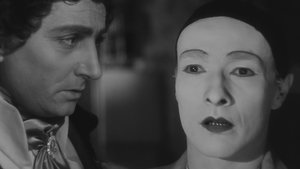Contact: [email protected]
Video Sources 0 Views

Synopsis
[ez-toc]




Introduction
In the ever-evolving landscape of cinema, the debate surrounding the colorization of classic black-and-white films continues to spark controversy. This article delves into the nuanced world of film preservation and restoration, with a specific focus on the recent colorization of the French cinematic masterpiece, “Children of Paradise Colorized.”
Film preservation is a delicate dance between conserving the historical authenticity of a piece and adapting it for contemporary audiences. The colorization of old films is at the heart of this debate, prompting discussions on the delicate balance between honoring artistic integrity and catering to modern visual preferences.
Read Media File Transfer Agreement: Terms and Conditions
Read FAQ
The Significance of “Children of Paradise Colorized”
Before dissecting the colorization process, it’s essential to grasp the profound significance of “Children of Paradise Colorized” in the realm of French cinema. Directed by Marcel Carné and written by Jacques Prévert, this 1945 classic is a testament to storytelling prowess and cinematic artistry.
Set against the backdrop of 19th-century Parisian theater, “Children of Paradise Colorized” weaves a captivating narrative that explores themes of love, passion, and the complexities of the human spirit. The film introduces a cast of memorable characters, from the enigmatic mime Baptiste to the beautiful courtesan Garance and the charismatic actor Frédérick. The tapestry of their interconnected lives unfolds in a poetic dance, creating an enduring masterpiece that transcends temporal boundaries.
A Masterpiece in Monochrome: Overview of “Children of Paradise Colorized”
A brief examination of the film’s plot and its key themes reveals the mastery of Marcel Carné’s direction and Jacques Prévert’s storytelling finesse. The black-and-white cinematography, with its play of shadows and contrasts, adds a timeless allure to the narrative, making “Children of Paradise Colorized” a cherished gem in the history of French cinema.
The film’s exploration of love, theater, and the human condition resonates with audiences, showcasing the enduring power of storytelling. As we celebrate the original monochrome masterpiece, the question arises: does introducing color enhance or diminish the essence of such classics?
The Controversy Surrounding Colorization
The controversy surrounding the colorization of black-and-white films is deeply rooted in the clash between artistic purism and the desire to cater to evolving audience tastes. Purists argue that altering the original aesthetic compromises the filmmaker’s vision and detracts from the intended viewing experience. On the other hand, proponents of colorization contend that it breathes new life into old classics, making them more accessible to modern audiences who might find black-and-white aesthetics less engaging.
This ongoing debate raises questions about the delicate balance between preserving historical cinematic treasures and adapting them for contemporary sensibilities. “Children of Paradise Colorized” becomes a poignant case study in this discourse, as we explore the impact of colorization on a film revered for its monochromatic beauty.
Restoring History: The Art and Science of Film Colorization
To understand the intricacies of colorizing a classic like “Children of Paradise Colorized,” we must delve into the technical processes involved in film restoration. The task is not merely about adding color; it’s a meticulous journey into preserving the essence of the original while adapting it for a modern visual palette.
Hand-tinting methods, once the primary means of adding color to films, have evolved into sophisticated digital restoration techniques. These advancements allow for more precise control over color choices, ensuring a faithful representation of the director’s vision. However, this process isn’t without its challenges.
Film colorization requires a delicate touch to strike the right balance between authenticity and contemporary appeal. Ethical considerations loom large, as restorers grapple with the responsibility of altering a cinematic classic. The question remains: how can we introduce color without compromising the soul of the original creation?
The Director’s Vision: Interpreting Colors for a Monochrome Film
Analyzing the colorization of “Children of Paradise Colorized” necessitates a deep dive into the director’s original vision. How do color choices reflect the intended atmosphere and emotions of a scene? The process involves more than a mere application of color; it demands a nuanced understanding of the film’s thematic elements and visual nuances.
In the case of “Children of Paradise Colorized,” where the interplay of light and shadow is integral to the narrative, color becomes a delicate tool. The challenge lies in preserving the subtleties of the black-and-white cinematography while enhancing the viewing experience with a carefully curated color palette.
The colorization of this classic serves as a testament to the interpretative nature of the process. It prompts us to ponder whether the addition of color complements or detracts from the directorial intent, and whether the nuances of emotion conveyed through monochrome visuals can be faithfully translated into a colored spectrum.
Audience Reception and Critical Response
As the colorized version of “Children of Paradise Colorized” graces screens, the critical and audience response becomes a pivotal aspect of our exploration. How have viewers, both nostalgic purists and modern cinephiles, received this adaptation?
Audience reactions often reflect a spectrum of opinions. Nostalgia-driven viewers may resist any alteration to the original aesthetic, citing a desire to preserve the film’s historical integrity. In contrast, a new generation of film enthusiasts might find the addition of color enhances their engagement with the storyline, bridging the gap between past and present.
Critics, too, play a crucial role in shaping the narrative surrounding colorized classics. Initial reviews might scrutinize the colorization process for potential missteps or artistic clashes. However, over time, a reassessment often occurs, allowing for a more nuanced evaluation of the film’s merit in its colorized form.
The dynamic interplay between audience reception and critical response invites us to ponder the evolving nature of cinematic appreciation. Does colorization breathe new life into a classic, or does it risk diluting the essence that made it a masterpiece in the first place?
Preserving Cinematic Gems: Balancing Conservation and Innovation
Beyond the controversy lies a fundamental question: What role does colorization play in preserving classic cinema for future generations? The importance of introducing old films to new audiences cannot be understated, but how can we achieve this without sacrificing the authenticity of the original creations?
Colorization, when approached with sensitivity and respect for the source material, can be a bridge between generations. It opens doors for younger audiences to discover and appreciate cinematic gems that might otherwise remain confined to the black-and-white realm. However, it is crucial to acknowledge that colorization should not overshadow efforts to conserve films in their original state.
Innovation in film preservation is essential for ensuring that classic cinema remains relevant. Whether through meticulous restoration of film negatives, digital enhancements, or carefully curated re-releases, there are myriad ways to introduce old films to new audiences. Colorization, when viewed as one facet of this broader preservation landscape, can contribute to the ongoing conversation about the intersection of tradition and innovation.
The Enduring Legacy of “Children of Paradise Colorized” through Colorization
As we approach the conclusion of our exploration, the question lingers: How has the colorized version contributed to the enduring legacy of “Children of Paradise Colorized”? Can this adaptation coexist with the original masterpiece, each adding a unique layer to the film’s legacy?
The colorized “Children of Paradise” offers a contemporary lens through which audiences can rediscover the timeless narrative. It serves as an invitation for new generations to explore the magic of French cinema and the brilliance of Marcel Carné and Jacques Prévert. By striking a delicate balance between tradition and innovation, the colorized version becomes a companion piece, rather than a replacement, to the original.
In our journey through the controversies, technical intricacies, and reception dynamics surrounding colorized films, “Children of Paradise Colorized” emerges as a microcosm of the larger discourse on film preservation. It prompts us to reflect on the evolving nature of cinematic art and the responsibility of preserving these cultural treasures for posterity.
In conclusion, the colorized 1945 version of “Children of Paradise Colorized” invites us to appreciate the delicate dance between conservation and adaptation in the realm of classic cinema. As we navigate the nuanced terrain of film preservation, we find that the addition of color, when approached thoughtfully, can be a gateway to ensuring that the magic of cinematic masterpieces continues to captivate audiences across generations. The enduring legacy of “Children of Paradise Colorized” remains intact, with its colorized iteration serving as a testament to the timelessness of great storytelling and the ever-evolving nature of our cinematic journey.




















